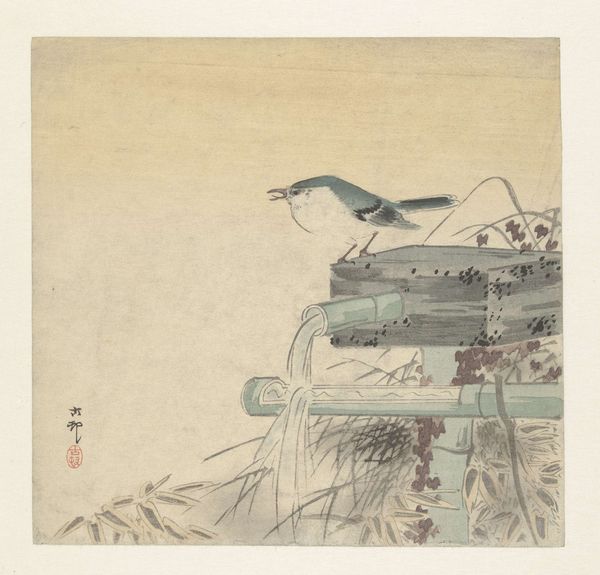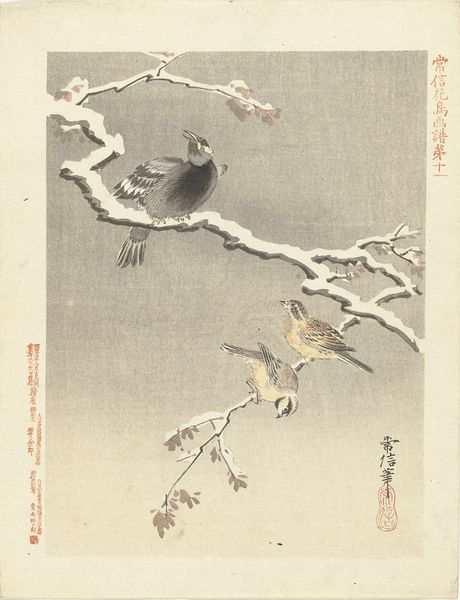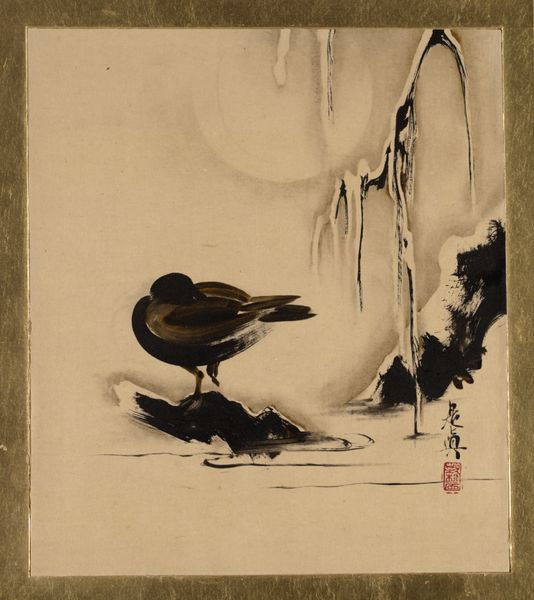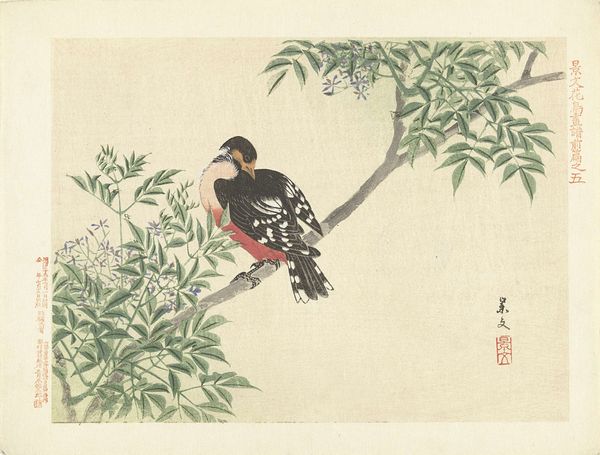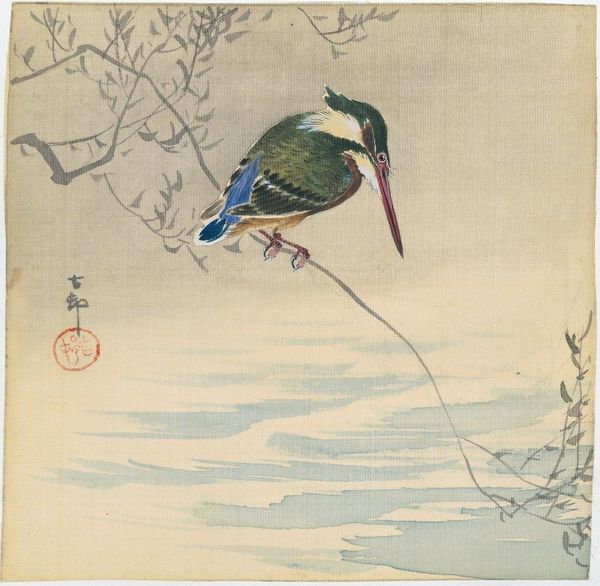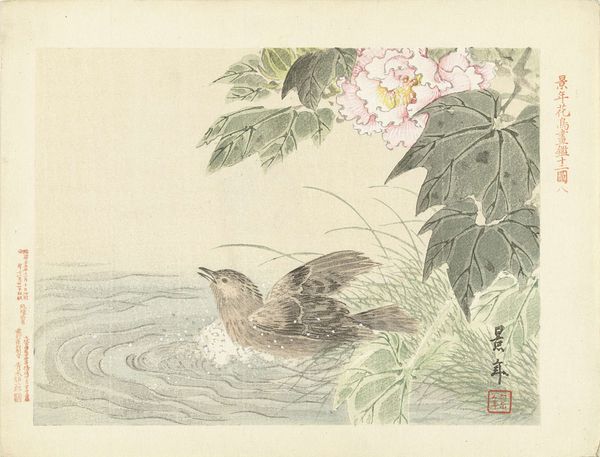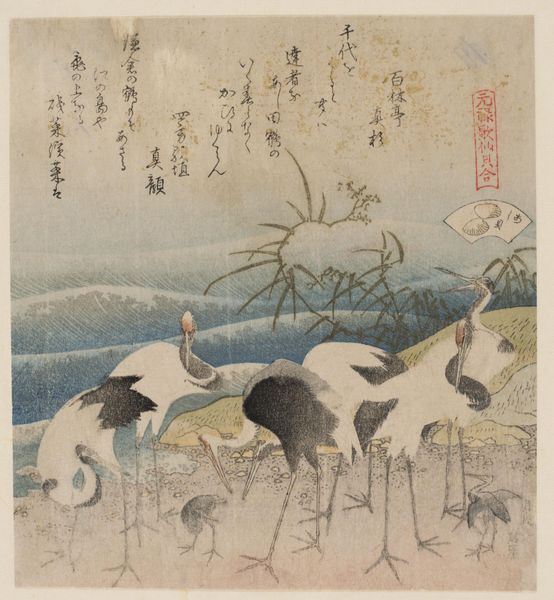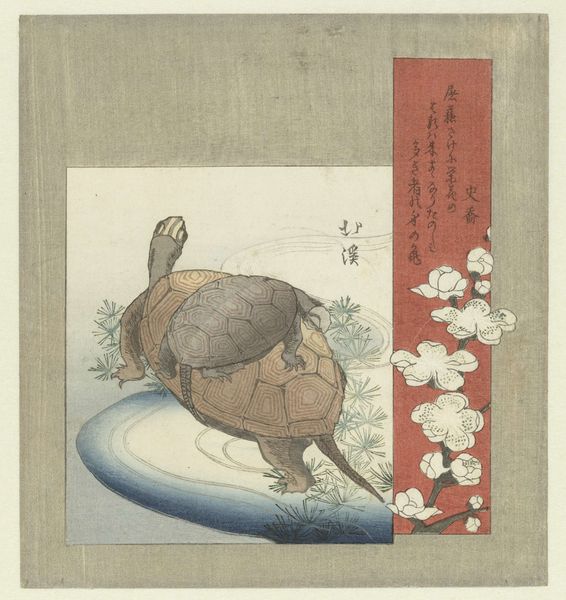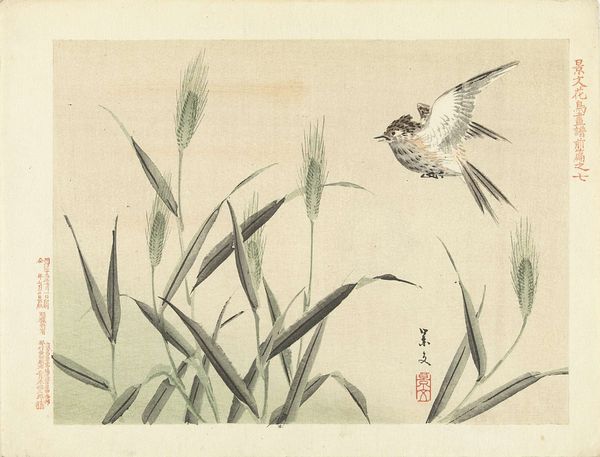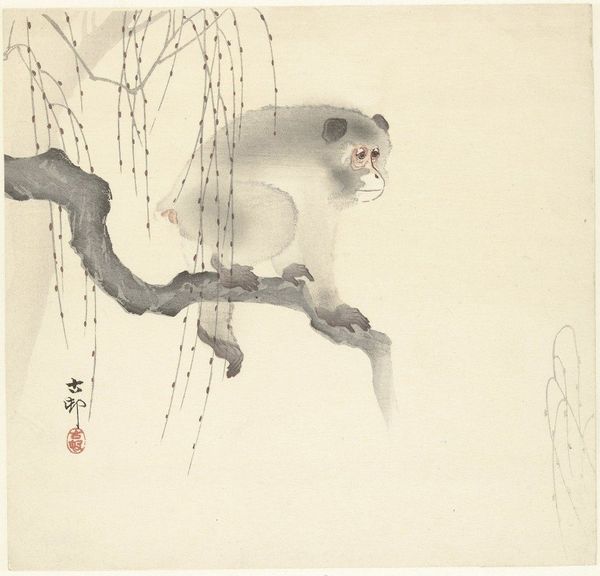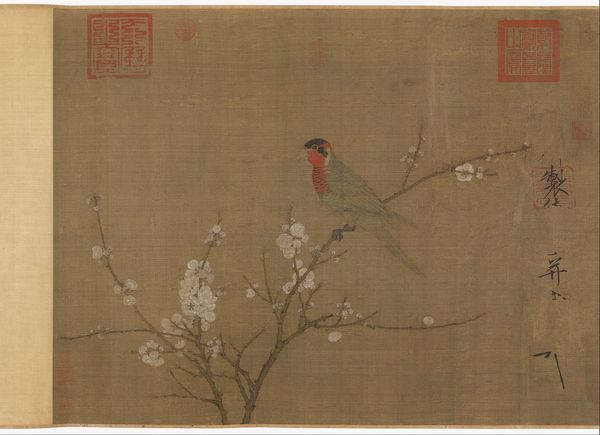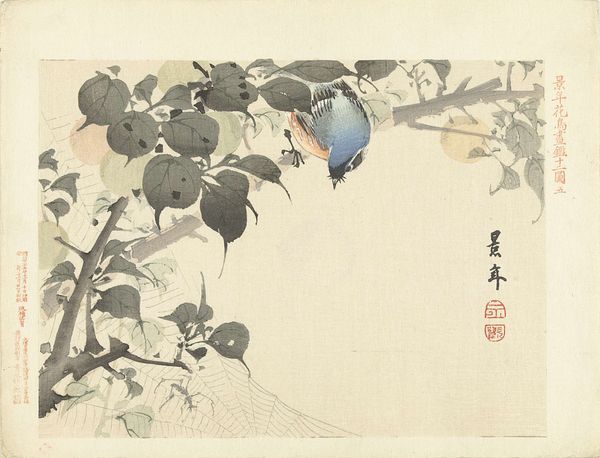
Dimensions: height 240 mm, width 250 mm
Copyright: Rijks Museum: Open Domain
Curator: Ohara Koson's "Wild Duck, Head Under Water" at the Rijksmuseum, created sometime between 1900 and 1930, is a striking image. It employs watercolor and print techniques characteristic of the Ukiyo-e tradition. Editor: I'm immediately struck by the tranquility. The muted colors and delicate brushstrokes create an incredibly peaceful atmosphere, despite the somewhat humorous subject of the duck diving headfirst. Curator: Ukiyo-e prints gained popularity in the West, shaping perceptions of Japanese art. The seemingly simple composition is actually a careful negotiation of traditional art and emerging markets. Koson cleverly plays to Western tastes while maintaining an inherent Japanese aesthetic. Editor: Right. The composition focuses very strongly on the animal itself. Its body creates almost an inverted triangle above the delicate line of its reflection. The slender reeds balance out that mass nicely, leading the eye upward. Curator: It’s fascinating to see how artists like Koson navigated this new global art world. They weren't simply producing art for art’s sake; these images were commodities with real political and cultural implications. Ukiyo-e actually impacted Western art itself through movements like Japonisme. Editor: The translucence is remarkable. Koson perfectly captures the subtle gradations of light on water, and it provides just enough detail to define the duck's form without being photorealistic. The focus really allows appreciation of tone and form over explicit detail. Curator: It's a good reminder that art exists within larger systems of exchange and influence, and that an image of a duck isn’t just a picture of a duck. Editor: I agree. There's a compelling balance achieved between simplicity and evocative atmosphere. It invites contemplation through masterful, but seemingly effortless means.
Comments
No comments
Be the first to comment and join the conversation on the ultimate creative platform.
